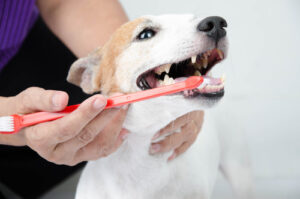Hair loss in cats, also known as alopecia, isn’t always just about shedding—there are times when it might signal underlying health issues. Whether it’s due to allergies, parasites, or other causes, knowing when to reach out for professional help is key. If your cat is losing hair, contacting Pet Townsend Veterinary Clinic in Port Townsend, WA, can help address the issue and keep your cat comfortable. Learn more about the common reasons for hair loss in cats and when to consider seeking professional advice.
What Are Common Causes of Hair Loss in Cats?
Cats can experience hair loss for various reasons, ranging from manageable environmental factors to more serious medical issues. While it’s natural for cats to shed, excessive hair loss is often a sign that something isn’t quite right. Here are some of the most common causes to consider:
- Allergies – Just like humans, cats can have allergic reactions to environmental factors, certain foods, or even grooming products. Allergic reactions often lead to excessive itching, causing your cat to scratch or groom the area excessively, leading to hair loss.
- Parasites – Fleas, mites, and ticks are common parasites that irritate a cat’s skin, prompting them to scratch and bite at affected areas. The result is often patches of missing hair, particularly around the neck and back.
- Hormonal Imbalances – Conditions such as hyperthyroidism can disrupt a cat’s normal hormone levels, leading to hair loss. Thyroid imbalances often impact middle-aged and older cats and may require specific treatments.
- Infections – Fungal and bacterial infections, such as ringworm, can lead to hair loss in cats. Ringworm is highly contagious and often appears as circular bald spots, making it crucial to address promptly to prevent its spread.
- Stress and Anxiety – Cats are sensitive creatures, and stress can trigger excessive grooming behaviors. A change in environment, a new pet, or even boredom can lead to compulsive grooming, resulting in bald patches.
Some Symptoms That Accompany Hair Loss in Cats
Hair loss alone isn’t always a cause for alarm, but when accompanied by other symptoms, it may indicate a deeper issue. Here’s what to watch for:
- Redness and Swelling – If your cat’s skin appears red, swollen, or warm to the touch, this could be a sign of infection or inflammation.
- Sores or Scabs – Sores or scabs often form when a cat scratches or bites at irritated areas. These can sometimes become infected, causing additional complications.
- Constant Scratching or Licking – While cats groom frequently, constant licking or scratching beyond normal grooming may suggest irritation or discomfort.
- Changes in Appetite or Weight – Some conditions associated with hair loss, like thyroid issues, can impact your cat’s appetite, leading to weight gain or loss.
- Lethargy or Behavioral Changes – If your cat seems more tired than usual or displays changes in behavior, this could be a signal of stress or an underlying health concern.
If you notice any of these symptoms, consider reaching out to your veterinarian for a thorough assessment. To speak with an experienced veterinary team in Port Townsend, WA, call Pet Townsend Veterinary Clinic at (360) 379-1133 or book an appointment online.
Diagnosing the Cause of Hair Loss in Cats
To address your cat’s hair loss effectively, your veterinarian may perform a series of diagnostic tests. Identifying the root cause can ensure that the appropriate treatment is administered, promoting healthier skin and coat. Here’s what a typical diagnosis process may involve:
Physical Examination and Medical History
Your veterinarian will begin by thoroughly examining your cat’s skin and fur. They will also ask questions about your cat’s medical history, diet, and recent behavior changes. Reviewing your cat’s environment and any recent lifestyle changes can help pinpoint potential triggers.
Skin Scraping and Fur Analysis
For cases involving suspected parasites or infections, a skin scraping might be conducted. This test helps identify mites or fungi and provides insight into possible irritants. A fur sample can also reveal nutritional deficiencies or hormone imbalances.
Blood Tests and Hormonal Panels
In cases where hormonal imbalances are suspected, such as with hyperthyroidism, your veterinarian may recommend blood tests. Hormonal panels can reveal abnormal hormone levels and provide a path for targeted treatment. Blood tests can also identify underlying systemic conditions that might contribute to hair loss. After determining the underlying cause, your veterinarian will recommend a treatment plan that best suits your cat’s needs.
Our Treatment Approach for Hair Loss in Cats
Once the cause of your cat’s hair loss is diagnosed, your veterinarian will discuss potential treatment options. Treatments vary widely depending on the root cause, from simple lifestyle adjustments to more in-depth medical interventions.
- Medicated Shampoos and Topical Treatments – If your cat’s hair loss is due to skin irritation or infection, a medicated shampoo or topical ointment may be recommended. These treatments soothe irritation, promote healing, and help protect the skin.
- Flea and Parasite Control – If parasites are the cause, your vet may prescribe a flea preventative or anti-parasitic medication to eliminate fleas, mites, or ticks and prevent future infestations.
- Dietary Adjustments and Supplements – In cases where food allergies or nutritional deficiencies are contributing factors, your veterinarian may suggest a specialized diet or nutritional supplements. Omega-3 fatty acids, for example, can support skin health and reduce inflammation.
- Medications for Allergies or Hormonal Imbalances – Allergies may require antihistamines or steroids, while hormonal issues like hyperthyroidism often require medications to balance thyroid levels.
- Behavioral Enrichment – For stress-induced hair loss, providing your cat with mental and physical stimulation can alleviate anxiety. Interactive toys, scratching posts, and quiet spaces can help reduce stress-related grooming behaviors.
How to Help Maintain Your Cat’s Fur Health
Here are some proactive steps you can take to support your cat’s fur health:
- Regular grooming can help reduce shedding, prevent matting, and allow you to detect any abnormalities in your cat’s coat early on. Brushing your cat not only keeps their fur smooth but also provides an opportunity to spot potential skin issues.
- Annual wellness visits to the vet can help catch underlying health issues before they escalate. Routine checkups are especially important as cats age, as they become more prone to conditions that may cause hair loss.
- A well-balanced diet is fundamental to overall health, including skin and fur. Feeding your cat high-quality food that meets their nutritional needs can prevent skin issues that contribute to hair loss.
- Regular use of flea preventatives can minimize the risk of parasites that cause itching and hair loss. Even indoor cats can benefit from flea control, as fleas can be brought into the home on other pets or even people.
- Reducing stress can improve your cat’s overall health and reduce compulsive grooming behaviors. Create a calm environment with quiet spaces and enrichment activities that support their natural instincts.
If your cat’s hair loss is persistent, worsening, or accompanied by other symptoms such as itching, redness, or lethargy, it’s time to reach out to a professional. Your veterinarian at Pet Townsend Veterinary Clinic can help identify the cause and provide targeted treatments that support your cat’s overall health and comfort. At Pet Townsend Veterinary Clinic, our team is dedicated to providing compassionate and thorough care for cats experiencing hair loss and other health concerns. To get to the bottom of your cat’s symptoms and determine the best course of action, call us today at (360) 379-1133 or book an appointment online.





